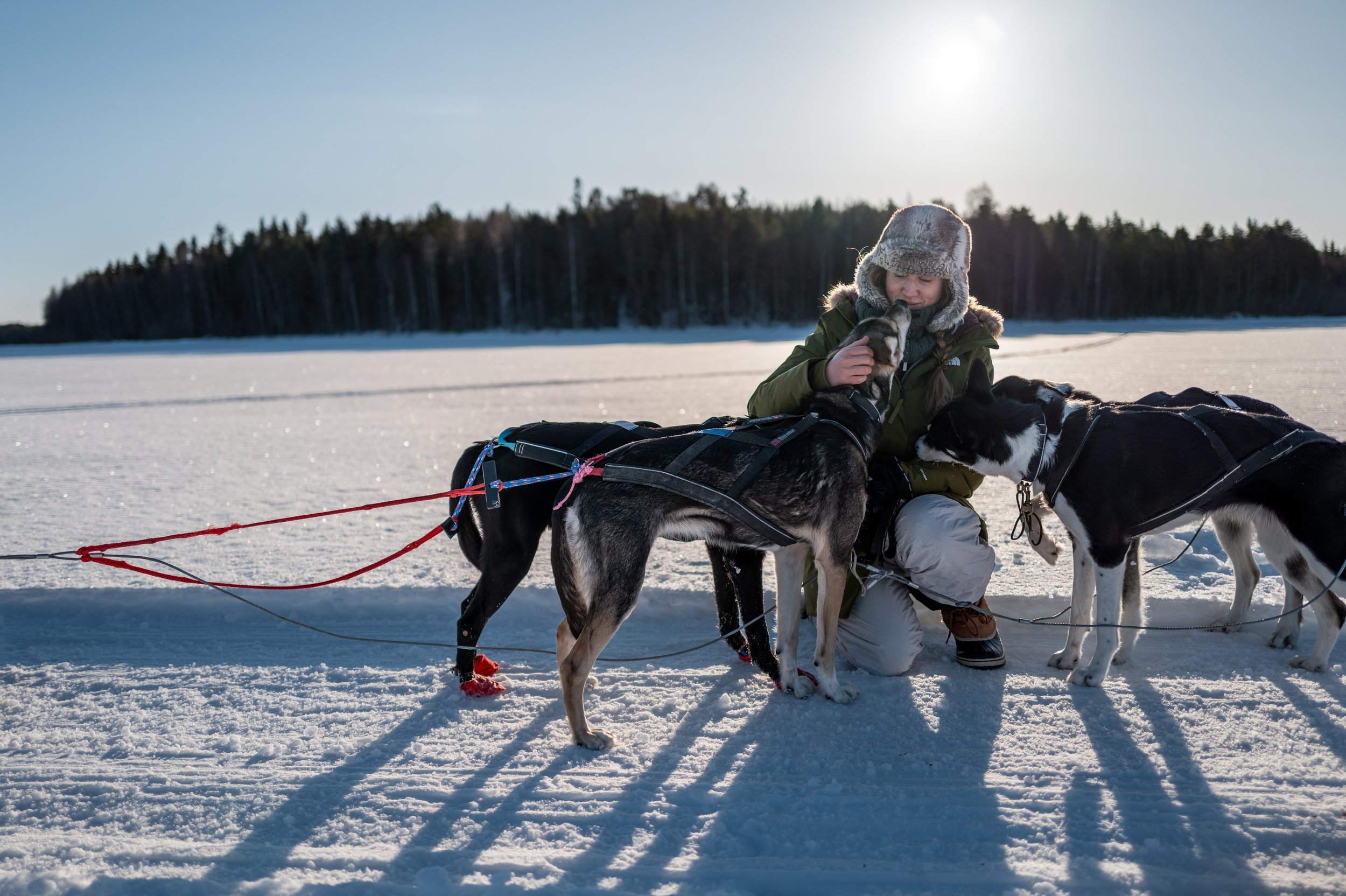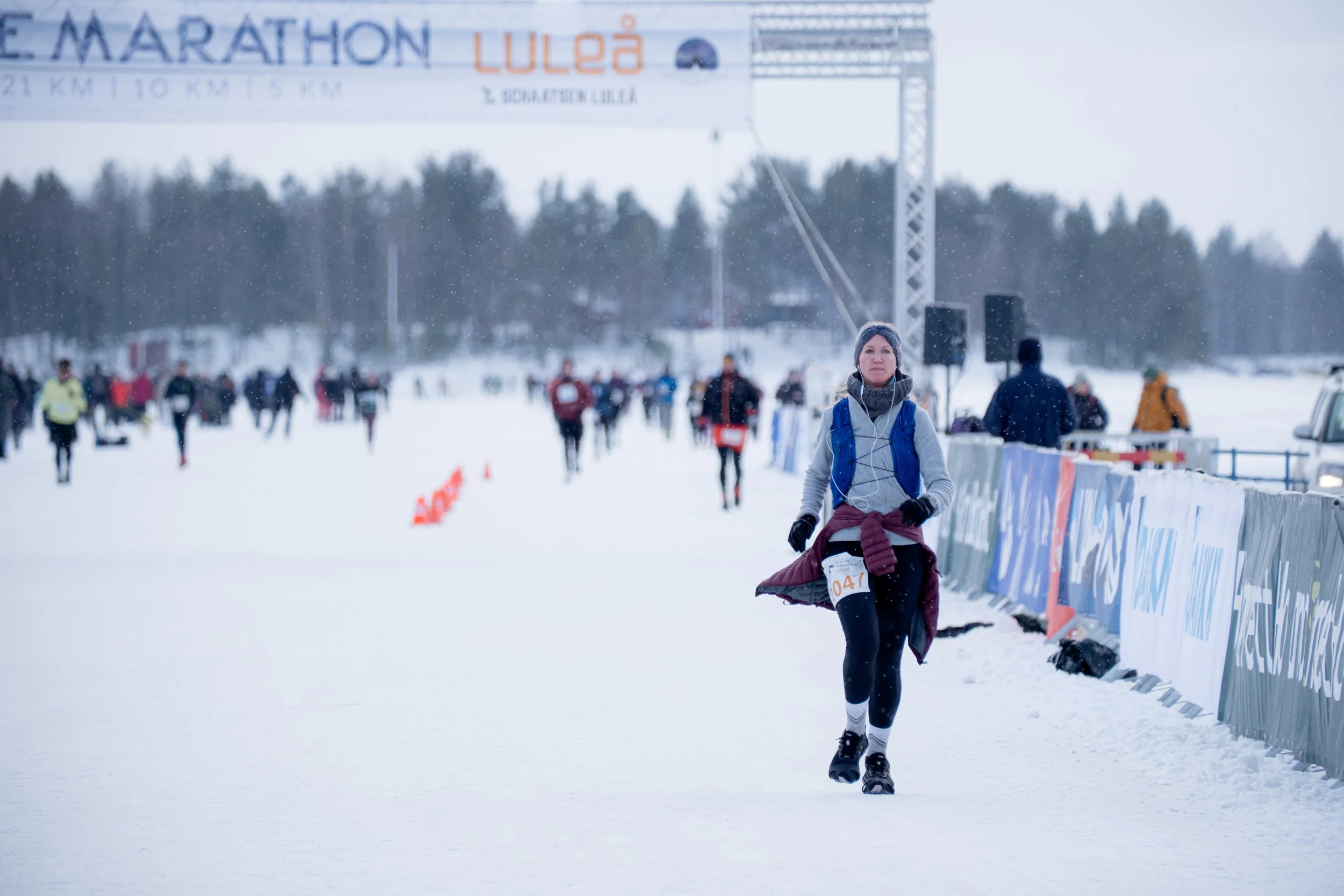
stories from the field
What is your connection to nature?
I look around, and everything is white. The frozen sea stretches endlessly. Under my feet, the ice whispers. The horizon blurs where snow meets sky, and for a moment, time stands still. Standing here, in the heart of the north, I feel small in the best possible way—humbled, grounded, and deeply connected to something greater than myself.
A few years ago, I fell in love with Sweden. I spent two months alone in nature, running ultra distances in the forests and mountains, feeling the raw beauty of the land with every step. Last weekend, I went further north—to Lapland—to run on the frozen sea.
In this remote wilderness, with nothing but an endless white horizon around me, I felt that same deep connection. A powerful reminder that nature has a way of stripping everything back to what truly matters.
I cannot express how grateful I am for these moments—for the stillness, the vastness, and the humbling power of untouched landscapes. Sweden’s nature is something special, and every time I return, I feel more at home, more alive, more myself.
And yet, as much as I admire these places, I also feel a responsibility. A responsibility to protect them, to ensure that future generations can experience the same awe and connection. Because when we connect deeply with nature, we remember our place within it—not above it.
𝗪𝗵𝗮𝘁 𝗶𝘀 𝘆𝗼𝘂𝗿 𝗰𝗼𝗻𝗻𝗲𝗰𝘁𝗶𝗼𝗻 𝘁𝗼 𝗻𝗮𝘁𝘂𝗿𝗲? 𝗪𝗵𝗲𝗿𝗲 𝗱𝗼 𝘆𝗼𝘂 𝗳𝗲𝗲𝗹 𝗺𝗼𝘀𝘁 𝗮𝗹𝗶𝘃𝗲?
What Australian Bushfire Prevention Taught Me About Sustainability Risk Assessment
It’s early morning, and instead of my alarm clock, I’m woken by the loud crow of a rooster. Blinking against the sunlight streaming into the room, I remember—I’m not in the cold Netherlands. I’m on my sister’s farm near Perth, Australia.
Just as I’m about to turn over and go back to sleep, I hear her call out: “Dig! We have to start clearing the leaves before it gets too hot!”
Every summer, bushfire season becomes a reality for her and her husband. They spend hours clearing dry leaves, cutting grass, and creating firebreaks to protect their farm, animals, and neighbors. With bushfires increasing in frequency and intensity over the last decade due to climate change, this isn’t just a chore—it’s essential.
The Australian government enforces strict fire safety laws: drones and helicopters monitor compliance, and fines are issued the same day if firebreaks aren’t maintained. Worse, if a fire hits and you’re not prepared, insurance won’t cover the damages. Most importantly, failure to act puts lives—both human and animal—at risk.
What would you do if it were your property instead of your business? When it’s personal, the answer is simple: you’d take every precaution to protect what matters most. The same mindset applies to sustainability in business.
While my sister’s farm isn’t a business, her bushfire prevention efforts mirror the Impacts, Risks, and Opportunities (IROs) businesses assess under the CSRD.
Impacts:
Negative Impact: Failing to clear leaves and maintain firebreaks could result in bushfires spreading across her property and beyond. This could devastate livestock, destroy local wildlife habitats, and contribute to long-term environmental degradation.
Positive Impact: On the other hand, my sister’s efforts have a meaningful impact. She rescues ex-racehorses, battery hens, and cows—all saved from slaughterhouses—offering them shelter and a second chance at life. Her farm not only mitigates risks but also provides a safe haven for animals in need.
Risks: Non-compliance with fire laws results in immediate fines, reputational damage, and, critically, no insurance coverage for damages if a fire occurs. Likewise, businesses that fail to address sustainability risks face financial, regulatory, and reputational consequences. Again, what would you do if it were your property? The risks become impossible to ignore when it’s personal.
Opportunities: Proactively preparing her land not only protects her farm but also strengthens bonds with neighbors. By sharing resources and taking collective responsibility, the community builds trust and long-term resilience. Businesses, too, can thrive by addressing sustainability challenges, fostering collaboration, and unlocking innovation.
Whether it’s a farm or a company, the lesson is the same: proactive responsibility protects what matters most.
Later that afternoon, reality hit hard. A fire alert was issued, and the air smelled faintly of smoke. We rushed to help her neighbor evacuate some animals as a precaution, a stark reminder that danger is often closer than we think.
This experience reinforced an important truth: preparation isn’t just about avoiding penalties—it’s about protecting what matters most.
For businesses, the CSRD presents a similar challenge. Assessing your IROs isn’t just about compliance—it’s a chance to safeguard your operations, strengthen your reputation, and create long-term opportunities.
So, whether you’re clearing leaves or building a sustainability strategy, ask yourself:
What would you do if it were your property instead of your business?
How are you preparing for your own “bushfire season”?


